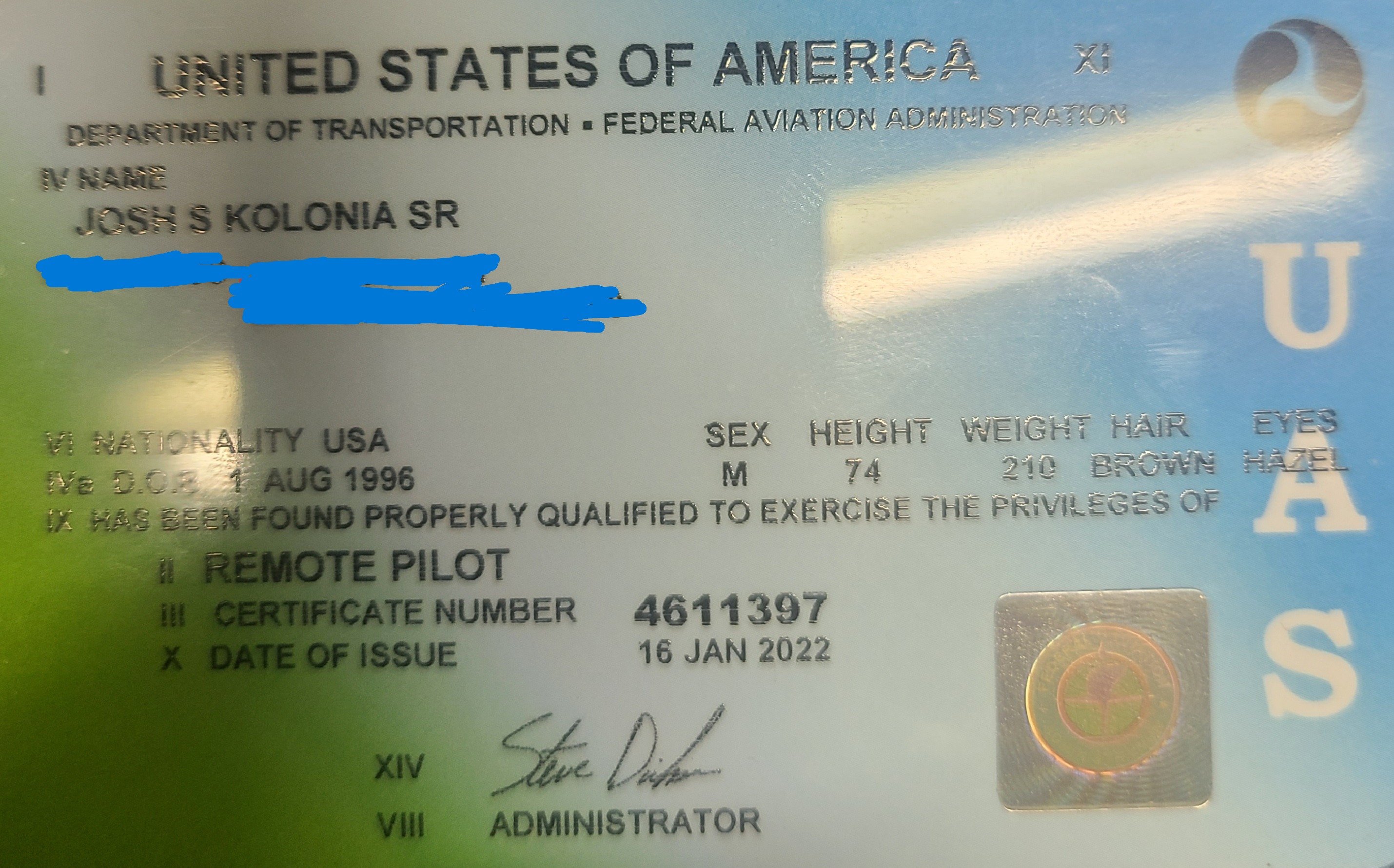How to Get Your Part 107 License: A Step-by-Step Guide


How to Get Your Part 107 License: A Step-by-Step Guide
So, you're looking to take your drone flying to the next level and operate commercially? That's awesome! Whether you're aiming to start a drone business, use drones in your current job, or just want to be a more knowledgeable and responsible pilot, getting your FAA Part 107 Remote Pilot Certificate is the way to go. It might seem a bit daunting at first, but trust me, with a bit of preparation, it's totally achievable. I'm Josh Kolonia from Cosmik Drones, and I'm here to walk you through it.
Step 1: Check Your Eligibility
Before you dive into studying, let's make sure you're eligible. The FAA keeps it pretty straightforward:
You must be at least 16 years old.
You must be able to read, speak, write, and understand English.
You must be in a physical and mental condition to safely fly a drone. (No medical exam required, but you need to self-certify).
Simple enough, right?
Step 2: Hit the Books – Study for the Aeronautical Knowledge Test
This is where the main effort lies. The Part 107 test, officially called the "Unmanned Aircraft General – Small (UAG)" exam, covers a range of aeronautical knowledge topics. You'll need to understand:
Regulations: FAA rules under 14 CFR Part 107 (this is key!).
Airspace Classification and Operating Requirements: Knowing where you can and can't fly, and what permissions you might need (Class G, E, D, C, B airspace).
Weather: How weather affects drone performance and flight safety, reading aviation weather reports (METARs, TAFs).
Loading and Performance: Understanding your drone's weight limits, balance, and how they affect performance.
Emergency Procedures: What to do if things go wrong.
Crew Resource Management: Communication and coordination if you're flying with others.
Radio Communication Procedures: Standard aviation phraseology (though not always required for drone ops, it's good to know).
Determining the Performance of Small Unmanned Aircraft: How factors like density altitude impact your drone.
Physiological Effects of Drugs and Alcohol: Obvious, but important!
Decision-Making and Judgment: Aeronautical Decision Making (ADM).
Airport Operations: How to operate safely near airports if authorized.
Maintenance and Pre-flight Inspection Procedures: Keeping your drone airworthy.
Study Resources:
Don't worry, you don't need a traditional pilot's license to learn this stuff! There are tons of great resources:
FAA Official Materials: The FAA provides free study guides and resources on their website. Start with the official Part 107 Advisory Circular (AC 107-2) and the Remote Pilot – Small Unmanned Aircraft Systems Study Guide.
Online Courses: Many companies offer Part 107 test prep courses (e.g., Pilot Institute, Drone Pilot Ground School, Peltier Photo Courses). These often include video lessons, practice questions, and structured learning. They can be a great investment.
YouTube: Lots of free content out there from flight instructors and drone experts.
Practice Tests: Crucial for gauging your readiness. Many online courses include them, or you can find standalone practice test apps and websites. Aim for consistent scores above 90% before you take the real deal.
I spent a good chunk of time with online courses and pounded practice questions until I felt confident with all the topic areas. It's not just about memorizing; it's about understanding the concepts.
Step 3: Schedule and Take the Test
Once you're consistently acing those practice tests, it's time to schedule your exam.
Find a Knowledge Testing Center: The FAA doesn't administer the tests directly. You'll take it at an FAA-approved Knowledge Testing Center. These are often located at flight schools or small airports. You can find a list of centers on the FAA's PSI Exams website (the company that manages the testing).
Cost: The test typically costs around $175 (this can vary slightly by testing center).
The Test Itself: It's a 60-question multiple-choice exam, and you'll have 2 hours to complete it. A passing score is 70% (meaning you need to get at least 42 questions right). You'll get your results immediately upon completion.
Remember to bring a valid photo ID to the testing center!
Step 4: Pass the Test? Great! Now, Apply for Your Certificate via IACRA
So you passed – congratulations! But you're not quite done.
IACRA: You'll need to complete FAA Form 8710-13 (Application for a Remote Pilot Certificate) using the FAA's Integrated Airman Certification and Rating Application (IACRA) system online. You'll create an account, fill out the application, and input your knowledge test ID.
TSA Vetting: As part of the process, the TSA will conduct a security background check. This is standard.
Temporary Certificate: Once your application is processed and the vetting is complete, you'll receive a temporary remote pilot certificate via email (usually within a week or two, but can vary). You can operate commercially with this temporary certificate.
Permanent Certificate: Your permanent plastic card certificate will be mailed to you a few weeks or months later.
Step 5: Stay Current – Recurrency Training
Your Part 107 certificate doesn't expire, but your knowledge needs to stay current!
* Recurrent Training: To exercise the privileges of your certificate, you must complete an FAA-approved online recurrent training course every 24 calendar months. This training covers updated rules and critical safety topics. The FAA offers this training for free on their FAASafety.gov website.
Flying High with Your New Certificate!
And that's it! Getting your Part 107 license is a significant achievement and opens up a world of possibilities for professional drone operations. It shows you're serious about safety and compliance, which clients and the FAA appreciate.
It took some effort, but having that certificate in hand feels great and gives me the confidence to tackle exciting projects with Cosmik Drones. If you have questions, feel free to reach out!
Fly safe, and fly smart!